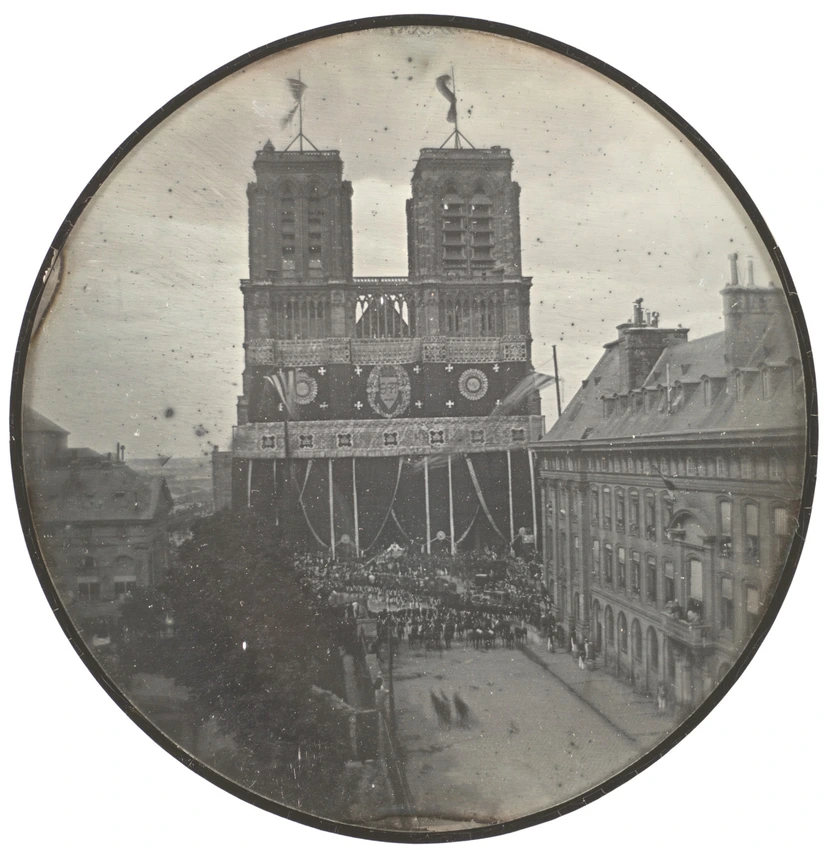Enterrement de Mgr le duc d'Orléans auquel j'ai assisté. C'est une grande perte pour la France
During the July monarchy, Ferdinand, eldest son of Louis-Philippe, was a popular prince. Open to liberal
ideas, and conscious of the position of the disadvantaged in society, he seemed to many to be the only person who could reconcile monarchy and democracy.
On the 13th July 1842, he went to Neuilly to see his family before leaving for military operations. The horses on his carriage bolted. The young prince, then aged 31, was fatally injured when he fell trying to escape from the carriage.
This picture was taken during the funeral at Notre Dame de Paris on 30th July. From an upper floor of a house opposite Notre Dame, Marc-Antoine Gaudin photographed the cathedral and the parvis. The precision of the daguerreotype enabled him to capture a great number of details. One can see the large, wooden structure and black cloth, which masked the cathedral façade for this occasion, as well as the two poles on the towers, where banners with the prince's colours were flying. In the midst of squadrons of lancers and national guards, even the carriage bearing the prince's coffin seems to be visible. The faint blurring of the image indicates a relatively short exposure time of only a few seconds. Gaudin had perfected a process, published in 1842 with the optician Lerebours, allowing an exposure time of 1/10th second.
The Burial of the Duke of Orleans is still the first known daguerreotype to give an almost instant view of a crowd. The representation of this historic event, which was contemporary with the beginning of photography, provides an exceptionally rare authentic account
